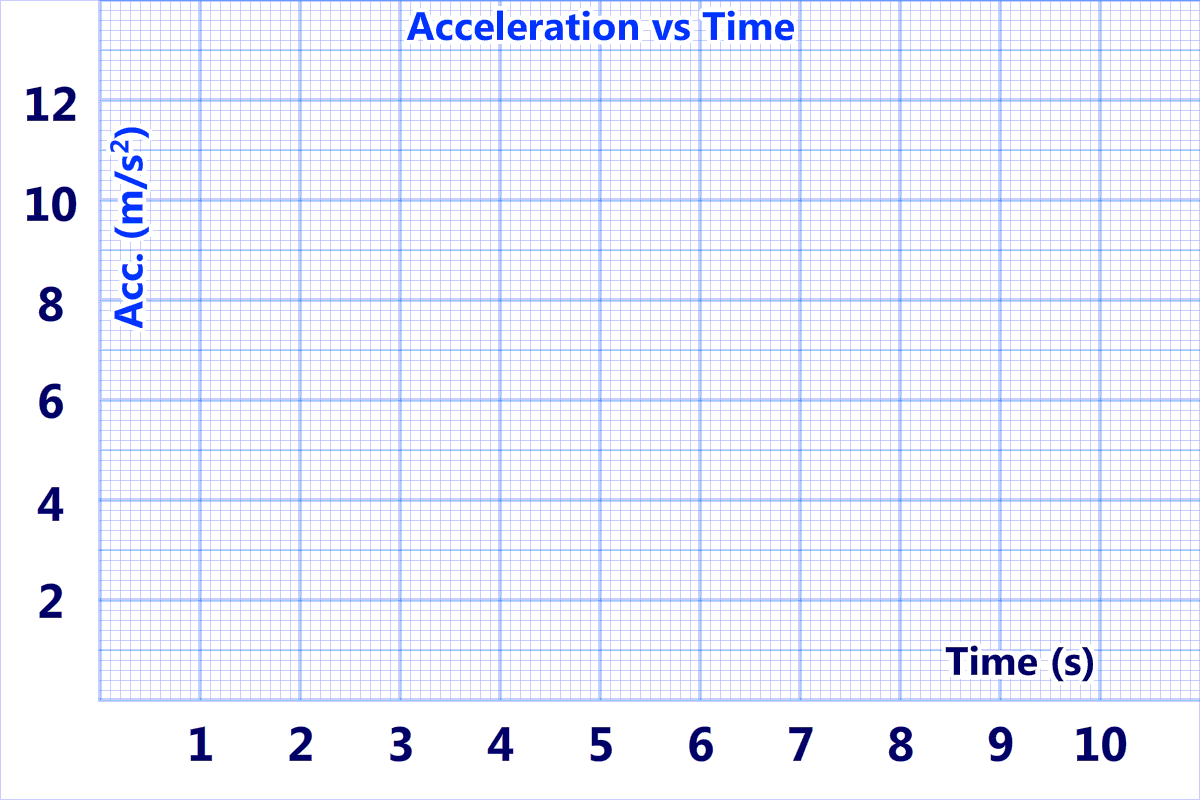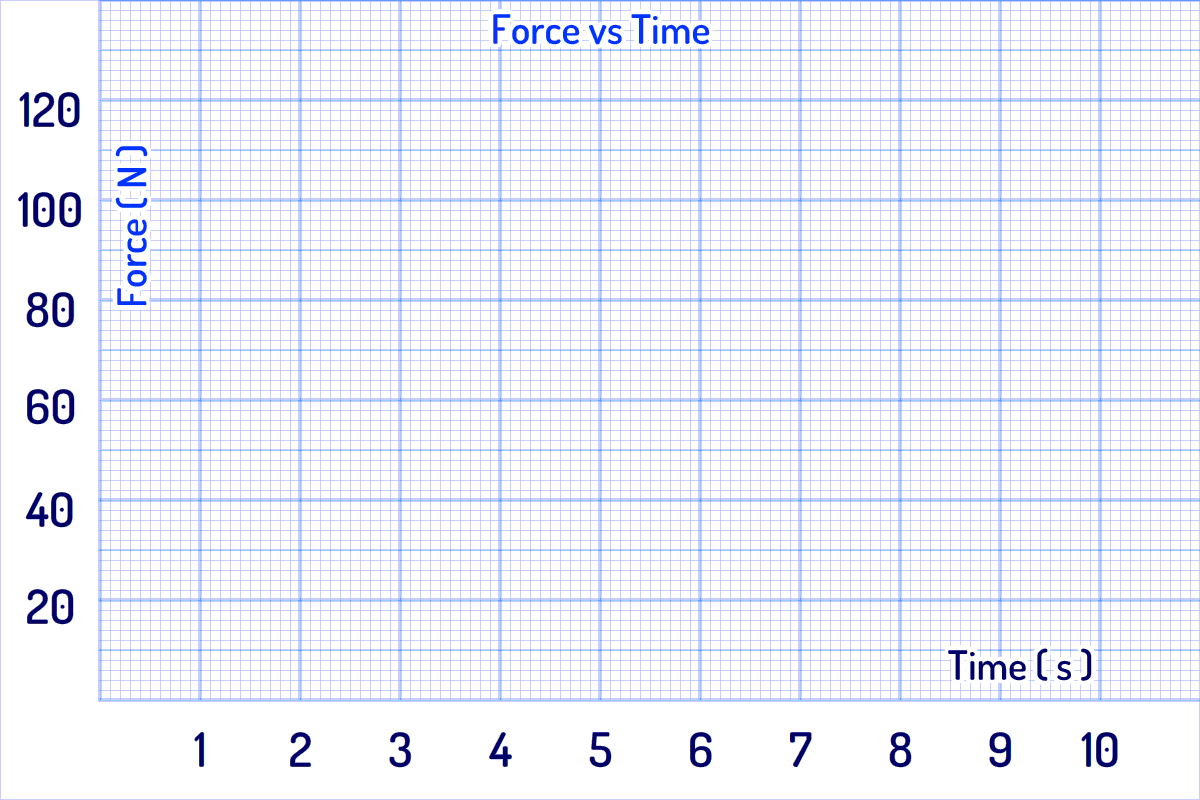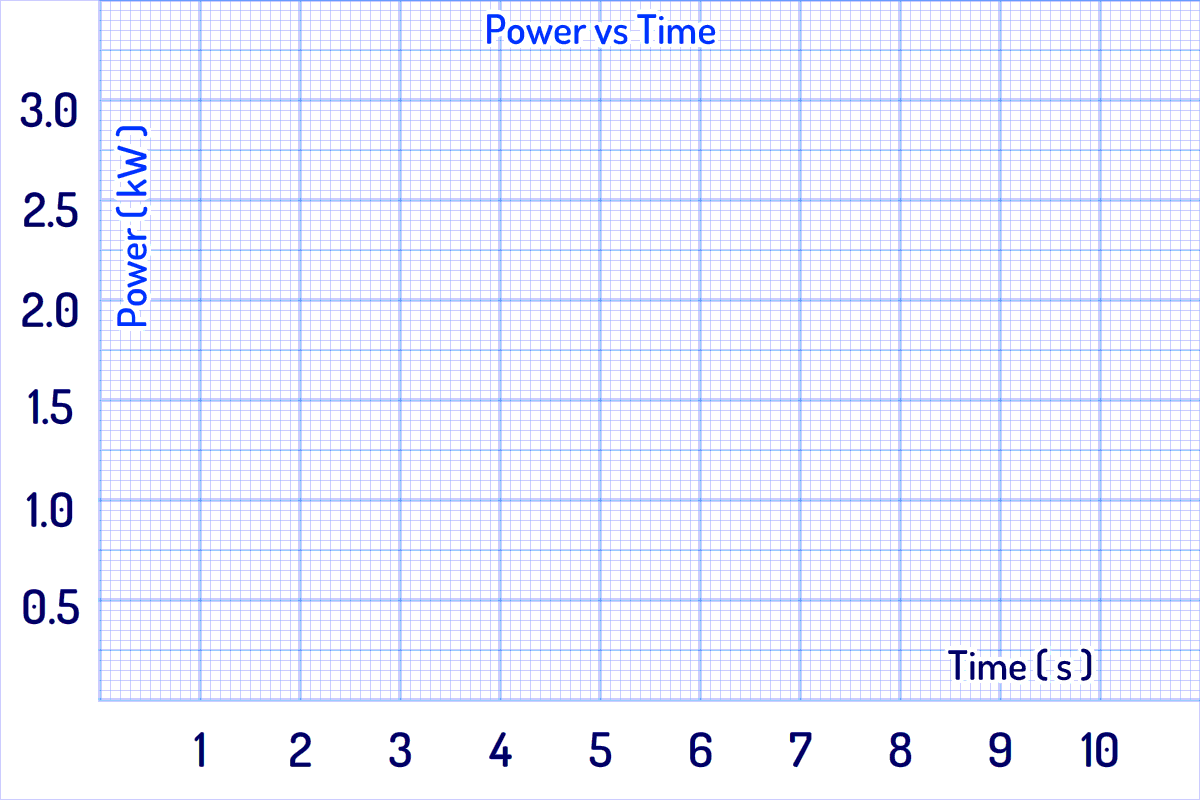Sprint Split Times Graphs
Only have room for 20–30 meters of all-out sprinting? Or perhaps shorter 30-meter sprints fit better into your training routine than a full 60-meter run? You can still estimate your top speed and predict a 60-meter time.
A single time is enough for a general conversion, but by timing the runner at multiple points (splits) both your max acceleration and your max velocity can be estimated. They should be about equal in magnitude. What is your strength/weakness?
The more splits, the better the estimation. Just two splits will still give an adequate prediction if they are far apart, for instance, one at 5 meters and the other at 50 meters.
To learn about the math used and what studies were consulted, please click below to expand.
Renewed Interest in Old Study
The underlying equation used is a so called mono-exponential equation for velocity v as a function of time t.
v(t) = vmax(1 - e-t/tau)
Where vmax is maximum velocity and tau is related to maximum acceleration. They vary – depending on the abilities of the runner.
The equation was introduced way back in 1927 by Furusawa et al. in the article The dynamics of "sprint" running but has been used much more recently in, for instance, the 2015 study A simple method for measuring power, force, velocity… by Samozino et al. and in the 2016 study Interpreting Power-Force-Velocity Profiles…by Morin J-B & Samozino.
While the equation obviously simplifies the actual relationship between velocity and time, it predicts a smoothed out velocity very well. It is also very useful in generating two key descriptive parameters of a short sprint, namely max velocity and max acceleration.
Position, Velocity, Acceleration
Enter split distances and times to plot distance over time:
COG Position
To ensure accurate distance measurements during a sprint, it’s important to consider the position of the body’s center of gravity (COG).
The hip joint is a good proxy for the COG and is typically positioned about 0.3 meters behind the start line when the runner is in the set position.
This means that when the hip crosses the 10-meter line, the actual distance covered by the COG is 10.3 meters. That is, 10.3 is the numerical value to input.
Alternatively, you can adjust starting position so that COG is directly above the start line. This is particularly viable for three-point starts.
As a side note, the estimated time for a 60-meter race is actually calculated for 60 meters, not 60.3 meters. Race timing stops when the torso, not the COG, crosses the finish line. A good lean at the finish can therefore compensate for the initial distance the COG lags behind the start line.
Timing Starts with the First Movement
Timing should not begin at the shot of the starting gun or the clap of hands, nor at events like hand release or the first touchdown. Timing should start at the first detected propulsive movement. Based on my experience, the earliest detected movement of the head works best for this purpose.
Timing Multiple Splits
The video below demonstrates a setup for timing multiple splits using a single device from a single position.
The video is a tutorial for an iPhone app, but the principles of timing demonstrated are of value even for hand-timing!
Note that this setup can be freely modified as long as the same principles are followed.
If you are at a 60 meters race, you can stand beside and along the 10-m line to capture the start and the 10-m split. By capturing the flash of the gun or its sound (adjusting for your distance to the gun), you can estimate the reaction time as the interval between the gunshot and the runners’ first detected movement. Subtract this reaction time from the official race times and voilà – you now have two split times: 10.3 meters and 60 meters. See these videos for an example of the approach. I stand at the edge of the long jump pit 8.2 meters from the start line, and I have also marked out the wall, so that an imaginary line, extending the pit edge, is easy to draw.
You can also use officially available split times. I have entered all the splits from 2025 European Indoor championship into this table. However, note that 'official' does not necessarily mean perfectly accurate timing. The times are likely based on torso positions rather the COG-posiitons. To account for the general decrease in forward lean througout a race, I have made heuristic adjustments when entering distances data for graph calculations. Since body lean will vary wildly at the finishing line, the 60 meter split has been omitted. Additionally, these 10-m interval splits are not ideal for calculating max acceleration – an extra 0-5 meter time would improve accuracy significantly.
Addendum (March 21, 2025): Since calculating the graphs values for both the homemade videos and EAIC official times, I have made slight refinements to the algorithm for a more precise estimation of the ratio/tau value. As a result, previously entered graph values may not match exactly with those shown when clicking a link to the actual graph.
Recommended Tools
The iPhone app MySprint is used in the video. Personally, I use the now-defunct Android app Coach’s Eye (still available from APK repositories), but the newer alternative VisualEyes should work similarly. Most video players on computers can also be used for timing by advancing frame by frame.
A 240 fps frame rate is not strictly necessary. 60 fps works well, as you can easily interpolate the time if the COG does not perfectly align with the marks in any given frame. Actually, detecting the first movement at the start can be more challenging with higher frame rates because the initial movements are often very subtle.
Results Position vs Time
Predicted time 60 m race (incl. 0.15 reaction time): -
Predicted time 40 yd NFL-style (laser timed hand release): -
Predicted time 40 yd NFL-style (hand timed start): -
For more info on timing in 60-meter races and 40-yard dash testing, please check the text on Usain Bolt's 40-yard time that accompany my game 40-Yard Dash
For a full understanding on the complexity of the reaction time concept, please read my article on the subject.
Results Velocity vs Time
Max velocity: -
Max velocity reached after: - and -
*At this stage, any further increase in velocity becomes negligible, with timing differences of less than 0.01 second per 10-meter split. If this stage is reached before 5.0 seconds, it probably indicates underdeveloped top speed.
Although the latter part of the curve may appear nearly flat, real-world performance is affected by fatigue, which sets in after about 6 seconds. Initially, the decrease in velocity is minimal, but it becomes noticeable after 10 seconds of running). This page focuses exclusively on acceleration, but a future update will include a section for converting splits into a full 100-meter race projection.

Results Acceleration vs Time
Max acceleration: -
Ratio max vel. to max acc.: - *
Smoothness: - **
*A value above 1.0 is typically seen in elite sprinters with excellent top speed. If you are not an elite sprinter, a value above 1.0 may rather indicate an underdeveloped acceleration.
**This value indicates how closely the timed splits align with smoothness of the curve. A low value may result from:
- Submaximal effort
- Abrupt transition to upright running
- Misstep or stumbles
- Inaccurate timing (see the section above on distances and timing for details)
What are the Underlying Causes of Unbalanced Acceleration & Top-Speed Running?
One potential cause could be the testing environment. If you’re not running in spikes on a synthetic track, you’re unlikely to reach your full potential for top speed. Top-speed running is highly technical, requiring a perfectly flat surface and lightweight shoes to optimize performance.
Tall vs Short
A common perception is that top-speed running favors taller athletes.
While there is some truth to this – for instance, 400- and 200-meter runners tend to be slightly taller than 100-meter sprinters, who in turn are usually taller than 60-meter specialists – exceptions abound. Yes, Usain Bolt, who is very tall, achieved the highest top speed ever recorded, yet his contemporary countrywoman Shelly-Ann Fraser-Pryce, who is very short, also excelled in the latter top-speed part of races.
The old saying, “Sprinters come in all sizes and shapes.” rings true.
Strong vs Weak?
A somewhat related notion is that acceleration favors muscular runners. This has some basis in reality: Initial acceleration is technically simpler to master – leaning forward and pushing off comes more naturally to most athletes.
In contrast, achieving exceptional top speed requires a refined running form (upright posture with pronounced front-side mechanics) that does not come naturally to many. Consequently, strong but less skilled sprinters do better in the early part of a race.
However, both acceleration and top-speed running ultimately depend on muscular force, but there are interesting differences.
Different Muscles
Acceleration and top-speed running engage different muscles.
During initial acceleration, the knee extensors (located at the front of the thigh) play a significant role.
In contrast, top-speed sprinting is dominated by the actions of the hip flexors and hamstrings, which perform a unique combination of hip extension followed by knee flexion.
The glutes, however, are critical in both phases.
Strength Relative to what Weight?
During acceleration the ratio of muscular power to total body weight is crucial as acceleration equals force divided by mass. On the contrary, but according to the same law, a heavier runner is less affected by the wind and maintains top speed easier.
At top-speed running it is rather the weight of the limbs themselves, as they cycle in air with only brief interruptions of ground contact, that matter more. The proximal (close to the hip joint) muscles have to work harder the more distal (far from the hip joint) the weight distribution of the limb.
Therefore light shoes and high situated calves are beneficial during top speed running. Look at the limbs of fast animals. All the large muscles are positioned far away from the tip of the limb.
The Different Roles of the Arms
The primary function of the arms is to counteract the rotational forces generated by the legs and therefore allowing us to run along a straight line. Larger legs require larger arms or larger arm movements.
But can they contribute to forward force directly? As one arm swings forward the other swings back. This should result in zero net forward force.
Yet they can. The arms swing upwards simultaneously and when leaning forward, i.e. during acceleration, that upward motion has a forward component that contributes to propulsion.
The inital step out of the starting blocks is the prime example of this action. The subsequent downward motion of the arms occurs while airborne, so it does not oppose propulsion.
During upright top-speed running this upward arm movement instead assists in the vertical lift preceding the airborne phase.
Vertical forces become significant during bounding exercises (similar to the second step of the triple jump) and often lead to soreness in the traps and deltoids in the days following, highlighting the upper body’s involvement.
Force & Power (horizontal only)
Enter your weight and wind conditions (if known):

Results Force vs Time
Ratio max air resistance to max ground reation force: -
It should be noted that this is not the force of the muscles but the force that acts on the ground.
WORK IN PROGRESS

Results Power vs Time
Max power - or -
Max power-per-weight ratio - or -
Max power reached after: - and -
*This is actually completely dependent of the maximal velocity. If, for example, maximal velocity is 10 m/s, maximal power is reached when the velocity is half of the maximal velocity. That is, maximal power is reached when velocity is 5 m/s.
WORK IN PROGRESS